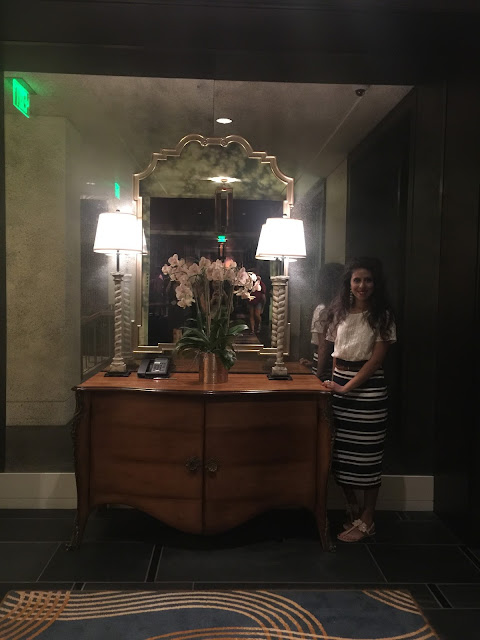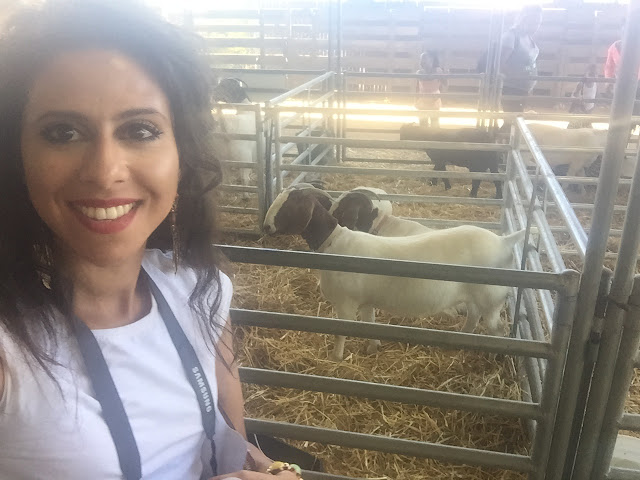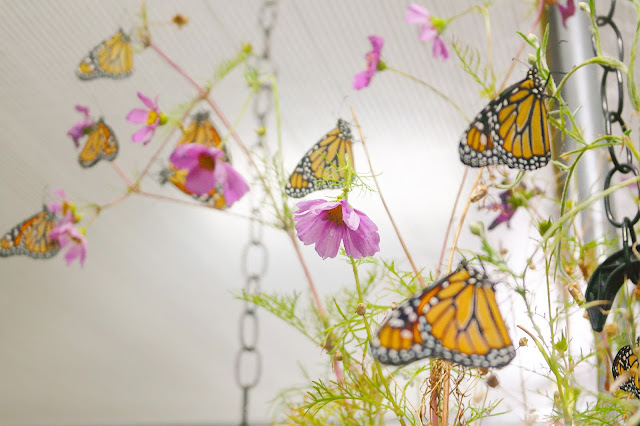What's special about IGNIS?
IGNIS is a rare type of laser system because it's a HIGH REPETITION RATE, HIGH PULSE ENERGY and HIGH AVERAGE POWER laser system. All these qualities are rarely seen in a single laser system so I was very fortunate to work on it.
Whilst I was there, I was building the laser enclosure for IGNIS and helping to move equipment from the old lab into the new lab. I also did a bit of plumbing too which was definitely a new skill I learnt!
 |
| The completed enclosure for IGNIS |
 |
| Shiny new laser enclosure for IGNIS |
 |
| Huge spanner for some plumbing for the cooling system for IGNIS |
The Herriott Cell
The most exciting part though, was when I got to work with a Herriott cell. A Herriott cell consists of two spherical, concave mirrors where one of the mirrors has an off-axis hole - the mirrors I was using were made of gold! So they were super expensive! Laser light enters through the hole and bounces between the two mirrors multiple times and then exits via the same hole under what is known as the RE-ENTRANT CONDITION. This condition states that the number of passes the light makes in the system multiplied by the angle between successive reflections is equal to a whole number multiple of 2π (360 °). For you maths fans out there we can describe this in the form of an equation:
Nθ = 2Mπ,
where N is a whole number (integer) and is related to the number of passes the light makes in the system, θ is the angle between successive reflections and M is a whole number.
What's the point of a Herriott cell?
A
Herriot cell allows light to bounce back and forth between the mirrors many times which means that when the light enters it will be a while til it comes out again, or at least a while in light timescales! So when a Herriott cell is added to a laser system it introduces what we call an
optical time delay. Say, we have a pulse of light that enters the Herriott cell and a pulse of light that doesn't go through the cell we will see that the pulse of light from the Herriott cell arrives later than the pulse that didn't go through the cell. This is helpful in laser systems when you want two pulses of light from different paths to arrive at the same time. We can adjust the distance between the mirrors of the Herriott cell, the angle of the incident laser beam (and the diameter of the mirror) in order to adjust the optical time delay and make sure the pulses arrive together at the same time. This is exactly the reason why I was testing out the Herriott cell, I wanted to know if it could offer the optical time delay required in the IGNIS laser system ... and I found that it could! So the Herriott cell will be making up part of IGNIS! :)
 |
| The gold mirrors for the Herriott cell |
 |
| The laser bounces multiple times between the mirrors along an ellipse on the mirror |
Poster session
In the last week of my time at SLAC I was able to showcase my work at an intern poster session, where the Director of LCLS, Mike Dunne, would judge our posters and offer prizes for the best one. It was great to meet the other interns and see what cool stuff they were working on. I also got to meet Mike Dunne, who was the first person I spoke to at Imperial College about doing an internship at SLAC and so it was great to met him in America where he could see all the cool things I was up to.
 |
| Poster session fun! :) |
 |
| My poster and video at the intern poster session |
Photoshoot
Those of you that know me, know that I cannot complete an internship without having a lab photoshoot at the end of it! So here are some pics from all over SLAC! (Yes, I did take a tour around the whole of SLAC (which is HUGE) just for the photoshoot ... what can I say, I love a good photoshoot *smirks*)
 |
| Outside the LCLS Office building |
 |
| I got to see the LINAC at SLAC - it was sooo cool! The tunnel looked like it went on forever! |
 |
| A bit of weekend working in the Cali sun (Visitor's Building at SLAC) |
 |
| LINAC |
 |
| LINAC |
 |
| I got to visit some of the experimental hutches at LCLS - they were awesome! |
 |
| Just outside the Far Experimental Hall of LCLS |
 |
| American trucks are HUGE! |
 |
| Outside the Far Experimental Hall, LCLS |
 |
| I LOVE all the colour matching at LCLS! |
 |
| The X-ray Correlation Spectroscopy hutch at LCLS |
|
 |
| Coherent X-ray Imaging hutch at LCLS |
 |
| Coherent X-ray Imaging hutch at LCLS - the pipe that runs through the room is the x-ray beam |
|
 |
| Matter in Extreme Conditions hutch at LCLS |
 |
| Matter in Extreme Conditions hutch at LCLS |
|
 |
| Matter in Extreme Conditions hutch at LCLS |
|
 |
| Electric truck at SLAC - cute! |
 |
| The Californian sky is so beautiful! |
 |
| XRT, LCLS |
First international intern at SLAC!
As if it wasn't a blessing enough to be able to work at LCLS at SLAC, it was even more of a blessing to find out that I was the first ever international intern at SLAC ever! I couldn't believe that I was the first one! And not only that, recently at university I've been hearing about how I've paved the way for other undergrads at my uni to go over to SLAC and they've come up to me for advice and I cannot wait to see them venture out to SLAC and have the time of their lives just like I did! I cannot describe how honoured I feel to have paved the way for other undergrads to follow in my footsteps and carry out an internship at SLAC! Hopefully many more can have the amazing experience I had when I was out there! :)
Because I was the first international intern at SLAC I was asked to be featured on the SLAC website and of course I said yes! I was interviewed by Michael Ross about my time at SLAC, how I got the internship and what my future plans were. The article was accompanied by a photoshoot (yay! :) ) by Chris Smith. Check out the article
here.
 |
| Me and my Herriott cell |
AFTER WORK IT'S TIME FOR A BIT OF FUN . . .
Here are some cool things I got up to in my final weeks in California:
Overall, the internship at SLAC was the BEST experience I have had to date! It was an incredible opportunity and I cannot honestly believe that I was able to do this and work at this AMAZING national facility that is home to the largest linear accelerator in the world! Just. UNBELIEVABLE.
I learnt SO much, met incredible people and had my first experience away from home and it was my first time in America too! So all in all, it was FANTABULOUS! Cannot even put into words how amazing this opportunity was and I want to say a huge thank you to all those that helped me get to SLAC and have this amazing opportunity. Thank you very much Mike Dunne, Alan Fry, Joe Robinson and Katalin Mecseki and Franz Tavella for making my internship at SLAC possible.
A huge thank you goes to all those that made my time at SLAC and California the best thing ever: Sid Patankar, Maegan Gonzales, Riccardo Veraldi, Ernesto Paiser, Omar Quijano, Matthew Windeler, Israt Alam.


















































No comments:
Post a Comment